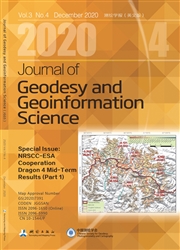Evaluation and Exploitation of Retrieval Algorithms for Estimating Biophysical Crop Variables Using Sentinel-2,Venus,and PRISMA Satellite Data
作者:Raffaele CASA,Deepak UPRETI,Angelo PALOMBO,Simone PASCUCCI,Hao YANG,Guijun YANG,Wenjiang HUANG,Stefano PIGNATTI
摘要:This paper is devoted to the development and testing of the optimal procedures for retrieving biophysical crop variables by exploiting the spectral information of current multispectral optical satellite Sentinel-2 and Venus and in view of the advent of the new Sino-EU hyperspectral satellite(e.g.,PRISMA,EnMAP,and GF-5).Two different methodologies devoted to the estimation of biophysical crop variables Leaf area index(LAI)and Leaf chlorophyll content(Cab)were evaluated:non-kernel-based and kernel-based Machine Learning Regression Algorithms(MLRA);Sentinel-2 and Venus data comparison for the analysis of the durum wheat-growing season.Results show that for Sentinel-2 data,Gaussian Process Regression(GPR)was the best performing algorithm for both LAI(R 2=0.89 and RMSE=0.59)and Cab(R 2=0.70 and RMSE=8.31).Whereas,for PRISMA simulated data the Kernel Ridge Regression(KRR)was the best performing algorithm among all the other MLRA(R 2=0.91 and RMSE=0.51)for LAI and(R 2=0.83 and RMSE=6.09)for Cab,respectively.Results of Sentinel-2 and Venus data for durum wheat-growing season were consistent with ground truth data and confirm also that SWIR bands,which are used as tie-points in the PROSAIL inversion,are extremely useful for an accurate retrieving of crop biophysical parameters.
发文机构:Department of Agriculture Forestry Nature and Energy Institute of Methodologies for Environmental Analysis Beijing Research Center for Information Technology in Agriculture Institute of Remote Sensing and Digital Earth
关键词:biophysicalcropparametersPRISMAGF-5Sentinel2VENUS
分类号: S51[农业科学—作物学]
- Near-zone Direct and Indirect Topographic Effects Based on the Rectangular Prism and Surface Element
- Satellite Positioning and Orbit Determination System(SPODS):Introduction and Evaluation
- Solar Radiation Pressure Modeling and Application of BDS Satellites
- Journal of Geodesy and Geoinformation Science Aims and Scopes
- Object Detection Research of SAR Image Using Improved Faster Region-Based Convolutional Neural Network
- Parameter Group Optimization by Combining CUBE with Surface Filtering and Its Application
- MHSS ARAIM Algorithm Combined with Gross Error Detection
- Automatic Matching of Multi-scale Road Networks under the Constraints of Smaller Scale Road Meshes
- Applicability of Bevis Formula at Different Height Levels and Global Weighted Mean Temperature Model Based on Near-earth Atmospheric Temperature
- Satellite Image Matching Method Based on Deep Convolutional Neural Network


